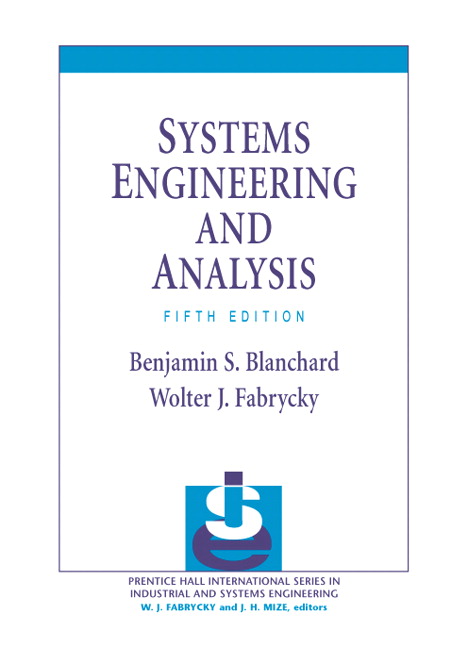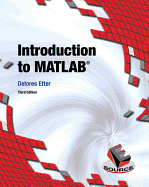Solution Manual for Systems Engineering and Analysis, 5/E 5th Edition Benjamin S. Blanchard, Wolter J. Fabrycky
$35.00
Solution Manual for Systems Engineering and Analysis, 5/E 5th Edition Benjamin S. Blanchard, Wolter J. Fabrycky
You will receive this product immediate after placing the order
CHAPTER 1
SYSTEMS SCIENCE AND ENGINEERING
1) A river system (Mississippi) is an assemblage of a watershed, tributaries, and river banks that conveys water from the continental U.S. to the Gulf of Mexico. A municipal transportation system (Chicago) is an assemblage of trains, buses, subways, etc. that transports people among many city locations. A system of organization and management (Matrix) is based on a morphology and procedure, coordinating both line and support functions. An automobile manufacturer is a combination of factories, organizations, dealerships, etc., that delivers automobiles and related support services. A home is an assemblage of land, structure, utilities, furnishings, and people that provides a supportive place to live for one or more families. Reference: Section 1.1 and Footnote 1 (pages 3-4).
2) The major components of a home are listed in Answer 1 above. Attributes include acreage, terrain, square footage, utility capacities, styles of decorating and furnishing, personalities, and philosophies. Relationships include layout, allocation of space to people, and approaches to living together. Reference: Section 1.1.1 (page 3).
3) A chemica1 processing plant is composed of structural components (building, tanks, piping), operating components (pumps, valves, controls), and flow components (chemical constituents, energy, information). Reference: Section 1.1.1 (page 4).
4) An air transportation system is composed of aircraft and numerous supporting facilities, equipment, and personnel, each of which is a subsystem. An aircraft itself is composed of lower–level subsystems (fuselage, wings, and engines) and these subsystems are further composed of subsystems. For example, the engine is composed of the compressor rotor, pump, pod, etc. Finally, the compressor rotor is composed of components such as the shaft and rotor blades. Reference: Section 1.1.2 (page 4).
5) The boundaries of a dam system can be limited to the physical dam. Alternatively, the human-modified river system, which now has a lake, can be considered a part of the dam system. The related road system, for which the dam now provides a bridge over the river, can be included. The region’s tourism service system, for which the dam system now provides an array of additional services, can be included. Reference: Section 1.1.2 (page 5).
6) A physical system such as a watershed has components which manifest themselves in space and time, whereas a conceptual system such as a work breakdown structure has no physical manifestations. It is only a plan for action. Reference: Section 1.2.2 (pages 6-7).
7) A static system such as a highway system may be contrasted with an airline system, which is a dynamic system. In the former, structure exists without activity whereas in the latter, structural components are combined with the activities of aircraft being loaded and unloaded, aircraft in flight, and controls which govern the entire operation. Reference: Section 1.2.3 (page 7).
8) A cannon is an example of a closed system. When a cannon is fired, a one–to–one correspondence exists between the initial and final states. However, the defense contractor’s design and manufacturing organization that produced the cannon and associated projectile is an open system, with a dynamic interaction of system components. These system components must be reconfigured and adapted to cope with changing requirements. Reference: Section 1.2.4 (page 8).
9) A watershed is a natural system made up of objects or components such as land, vegetation, and the watercourse; attributes such as the soil type, timber species, and the river width; and relationships such as the distribution of the attributes over the terrain. A chemical processing plant is a human–made system with components described in Answer 3 above, attributes such as tank volume and pipe diameter, and relationships such as the flow rates and the yield of final product per energy unit utilized. A person with a pacemaker is a human-modified system with components of body parts and pacemaker parts, attributes such as body mass, diseases, attitudes, battery, controller, and electrodes, and relationships such as implantation location, rhythm, and signal strength. Reference: Section 1.1.1 (pages 3-4) and Section 1.2.1 (page 6).
10) The purposes of a chemical processing plant in a market economy are to produce one or more chemical products and possibly byproducts that can be sold at a profit while fulfilling obligations to stakeholders and the public. Measures of worth include production cost per unit volume, product quality, flexibility of product mix, benefits to stakeholders, and compatibility with society. Reference: Section 1.1 (pages 3-5).
11) During startup the state of a chemical processing plant is that pipes and vessels are filled to a certain location and empty after that location; pumps for vessels being filled are running and valves are open while other pumps are not running and valves are closed. A behavior is that when a vessel is filled, the control system turns off the pump (in a batch system) or reduces its speed (in a continuous system) and activates the next step in the process. The process is to start up, achieve the designated operational speed for each subsystem, continuously monitor the production results and make needed adjustments, and eventually shut down and clean out. Reference: Section 1.1.1 (pages 3-4).
12) A pump and the tank it fills have a relationship. The pump provides the material that the tank needs, while the tank provides a location where the pump can store the material it needs to deliver. The attributes of the pump must be engineered so that it can reliably move the material(s) the tank needs at an adequate rate for any given speed of overall system operation. The attributes of the tank must be engineered so that it can store the quantities of material the pump must deliver without corrosion or contamination. Thus the downstream components have the material they need to fulfill the plant’s production purpose without problems of quality or pollution. Reference: Section 1.1.1 (pages 3-4).
13) In a computer system, the power supply and system board have a first-order relationship because the system board must receive the reduced voltage produced by the power supply in order to function, and the power supply would be useless if there were no system board to perform and coordinate the computer functions. The system board has a second-order relationship with a math coprocessor, or a video processor, or with video memory. The system board could perform the functions of these additional components, but the added components relieve the system board’s workload, thereby improving its performance. A second power supply or a mirror image hard disk drive provide redundance, ensuring that the system board can continue receiving electrical power and the data storage function, thereby helping to assure continuation of the computer system function. Reference: Section 1.1.1 (page 4).
14) Human introduction of plant or animal species into regions where they do not naturally occur can provide the benefits of those species in the new regions, but the new species may become excessively dominant in those regions due to lack of natural enemies, crowding out or harming beneficial native species. Reference: Section 1.2.1 (page 6).
15) The movement of individual molecules is a random dynamic system property whose aggregate behavior is influenced by temperature. The microwave signal that electrons emit when they change energy states is a steady state dynamic system property that forms the basis for atomic clocks. Reference: Section 1.2.3 (page 7) and Section 1.2.4 (page 8).
16) A forest reaches equilibrium. A tree is in equilibrium until it dies, and then it disintegrates. Reference: Section 1.2.1 (page 6) and Section 1.2.4 (page 8).
17) The government described is a single system because the branches thereof are functionally related. Refer to the opening paragraph of Section 1.1 (page 3).
18) Analyzing a company’s information systems as a system-of-systems can reveal the need for common databases. Analysis of the individual systems would not reveal this need and its potential design benefit. Reference: Section 1.2.2 (page 7).
19) Cybernetics may be described and explained by considering the early mechanical version of a governor to control the revolutions per minute (RPM) of an engine. Centrifugal force, acting through a weight mechanism on the flywheel, is used to sense RPM. The outward movement of the weight against a spring acts through a link to decrease the throttle setting, thus reducing engine speed. Reference: Section 1.3.1 (page 8).
Be the first to review “Solution Manual for Systems Engineering and Analysis, 5/E 5th Edition Benjamin S. Blanchard, Wolter J. Fabrycky” Cancel reply
Related products
Solution Manual
Solution Manual for Introduction to Electrodynamics, 4/E 4th
Solution Manual
Solution Manual for Psychology and Life 20th Edition by Gerrig












Reviews
There are no reviews yet.